X-Band Radar Cross-Section of Tandem Helicopter Based on Dynamic Analysis Approach
Abstract
1. Introduction
2. Dynamic Analysis Approach
2.1. Dynamic Process Simulation
2.2. Electromagnetic Scattering Calculation
2.3. Doppler Analysis
2.4. Method Verification
3. Model of Tandem Helicopter
4. Results and Discussion
4.1. Influence of Individual Rotor
4.2. Influence of Observation Angle
4.3. Influence of Rotor Disk Inclination
4.4. Influence of Attitude Angle
4.5. Doppler Feature Analysis
5. Conclusions
Author Contributions
Funding
Institutional Review Board Statement
Informed Consent Statement
Data Availability Statement
Acknowledgments
Conflicts of Interest
References
- Niu, L.; Xie, Y.; Wu, P.; Zhang, C. ARCS: Active radar cross section for multi-radiator problems in complex EM environments. Sensors 2020, 20, 3371. [Google Scholar] [CrossRef] [PubMed]
- Chen, J.; Zhu, Q.; Wang, K.; Zhu, Z.; Shen, S. Aerodynamic characteristics analysis of twin-rotor in tandem helicopter. Adv. Aeronaut. Sci. Eng. 2020, 11, 167–176. [Google Scholar]
- Zhou, Z.; Huang, J. Influence of rotor dynamic scattering on helicopter radar cross-section. Sensors 2020, 20, 2097. [Google Scholar] [CrossRef] [PubMed]
- Yu, Q.; Zhan, J.; Lv, C. Analysis of key technology and development trend of foreign tandem helicopter. Helicopter Technol. 2010, 1, 57–61. [Google Scholar]
- Zhou, Z.; Huang, J.; Wu, N. Acoustic and radar integrated stealth design for ducted tail rotor based on comprehensive optimization method. Aerosp. Sci. Technol. 2019, 92, 244–257. [Google Scholar] [CrossRef]
- Alhaji Musa, S.; Raja Abdullah, R.S.A.; Sali, A.; Ismail, A.; Rashid, N.E.A. Low-Slow-Small (LSS) Target Detection Based on Micro Doppler Analysis in Forward Scattering Radar Geometry. Sensors 2019, 19, 3332. [Google Scholar] [CrossRef]
- Huang, S.; Lin, Y.; Huang, J.; Zhao, Q.; Li, M. Experimental investigations on flow field and performance of tandem rotors. J. Nanjing Univ. Aeronaut. Astronaut. 2011, 43, 363–368. [Google Scholar]
- Zhou, Z.; Huang, J.; Wang, J. Radar/infrared integrated stealth optimization design of helicopter engine intake and exhaust system. Aerosp. Sci. Technol. 2019, 95, 105483. [Google Scholar] [CrossRef]
- Li, J.; Zhang, M.; Jiang, W.; Wei, P. Improved FBAM and GO/PO Method for EM Scattering Analyses of Ship Targets in a Marine Environment. Sensors 2020, 20, 4735. [Google Scholar] [CrossRef]
- Ye, S.B.; Xiong, J.J. Dynamic RCS Behavior of Helicopter Rotating Blades. Acta Aeronaut. Astronaut. Sin 2006, 27, 816–822. [Google Scholar]
- Linghu, L.; Wu, J.; Wu, Z.; Wang, X. Parallel computation of EM backscattering from large three-dimensional sea surface with CUDA. Sensors 2018, 18, 3656. [Google Scholar] [CrossRef] [PubMed]
- Li, G.; Cao, Y.; Zhong, G. Rotor icing model and trim characteristics analysis for tandem helicopter. J. Beijing Univ. Aeronaut. Astronaut. 2010, 36, 1034–1038. [Google Scholar]
- Guo, L.; Zhang, X.; Yao, D.; Yang, Q.; Bai, Y.; Deng, W. A single-dataset-based pre-processing joint domain localized algorithm for clutter-suppression in shipborne high-frequency surface-wave radar. Sensors 2020, 20, 3773. [Google Scholar] [CrossRef] [PubMed]
- Wang, Y.; Zhu, J.; Sun, Z. Unmanned tandem helicopter simulation. J. Tsinghua Univ. Sci. Technol. 2003, 43, 83–85, 93. [Google Scholar]
- Zhou, Z.; Huang, J.; Wang, J. Compound helicopter multi-rotor dynamic radar cross section response analysis. Aerosp. Sci. Technol. 2020, 105, 106047. [Google Scholar] [CrossRef]
- Yu, Q. Comparative analysis of tandem helicopter and single rotor helicopter. Helicopter Technol. 2008, 2, 62–68. [Google Scholar]
- Li, G.; Cao, Y.; Yang, Q. Analysis for determining trim, stability and control ability of tandem helicopter. J. Beijing Univ. Aeronaut. Astronaut. 2009, 35, 74–77. [Google Scholar]
- Zhou, Z.; Huang, J.; Wang, J. Electromagnetic scattering characteristics of coaxial helicopter based on dynamic transformation method. Chin. J. Aeronaut. 2020. [Google Scholar] [CrossRef]
- Zhang, H.; Shi, Q.; Yu, S. Design and simulation of tandem helicopter control law based on Dspace. Helicopter Technol. 2011, 3, 29–32. [Google Scholar]
- Galati, G.; Pavan, G.; Wasserzier, C. Characterization of Back-Scattering and Multipath in a Suburban Area after the Calibration of an X-Band Commercial Radar. Sensors 2020, 20, 463. [Google Scholar] [CrossRef]
- Yan, Q.; Sheng, S.; Lin, Q. Unmanned Tandem Helicopter Robust Guaranteed Cost Controller. Ordnance Ind. Autom. 2018, 37, 34–38. [Google Scholar]
- Balal, N.; Balal, Y.; Richter, Y.; Pinhasi, Y. Detection of Low RCS Supersonic Flying Targets with a High-Resolution MMW Radar. Sensors 2020, 20, 3284. [Google Scholar] [CrossRef] [PubMed]
- Guo, J.; Yin, H.C.; Ye, S.J.; Man, L.; Jia, Q. Novel technology for electromagnetic characteristic simulation of helicopter blades. Acta Aeronaut. Astronaut. Sin 2019, 40, 322732. [Google Scholar]
- Han, Q.; Pan, M.; Long, W.; Liang, Z.; Shan, C. Joint Adaptive Sampling Interval and Power Allocation for Maneuvering Target Tracking in a Multiple Opportunistic Array Radar System. Sensors 2020, 20, 981. [Google Scholar] [CrossRef]
- Li, Y.; Liu, Y.; Wang, Y.; Lin, Y.; Shen, W. The Millimeter-Wave Radar SLAM Assisted by the RCS Feature of the Target and IMU. Sensors 2020, 20, 5421. [Google Scholar] [CrossRef]
- Zhou, Z.; Huang, J.; Yi, M. Comprehensive optimization of aerodynamic noise and radar stealth for helicopter rotor based on Pareto solution. Aerosp. Sci. Technol. 2018, 82, 607–619. [Google Scholar] [CrossRef]
- Su, C.; Ishimaru, A.; Kuga, Y. Time-domain analysis of multiple scattering effects on the radar cross section (RCS) of objects in a random medium. Waves Random Complex Media 2020. [Google Scholar] [CrossRef]
- Pouliguen, P.; Lucas, L.; Muller, F.; Quete, S.; Terret, C. Calculation and Analysis of Electromagnetic Scattering by Helicopter Rotating Blades. IEEE Trans. Antennas Propag. 2002, 50, 1396–1408. [Google Scholar] [CrossRef]
- Gordon, W.B. Far—field approximations to the Kirchhoff—Helmholtz representations of scattered fields. IEEE Trans. Antennas Propag. 1975, 23, 590–592. [Google Scholar] [CrossRef]

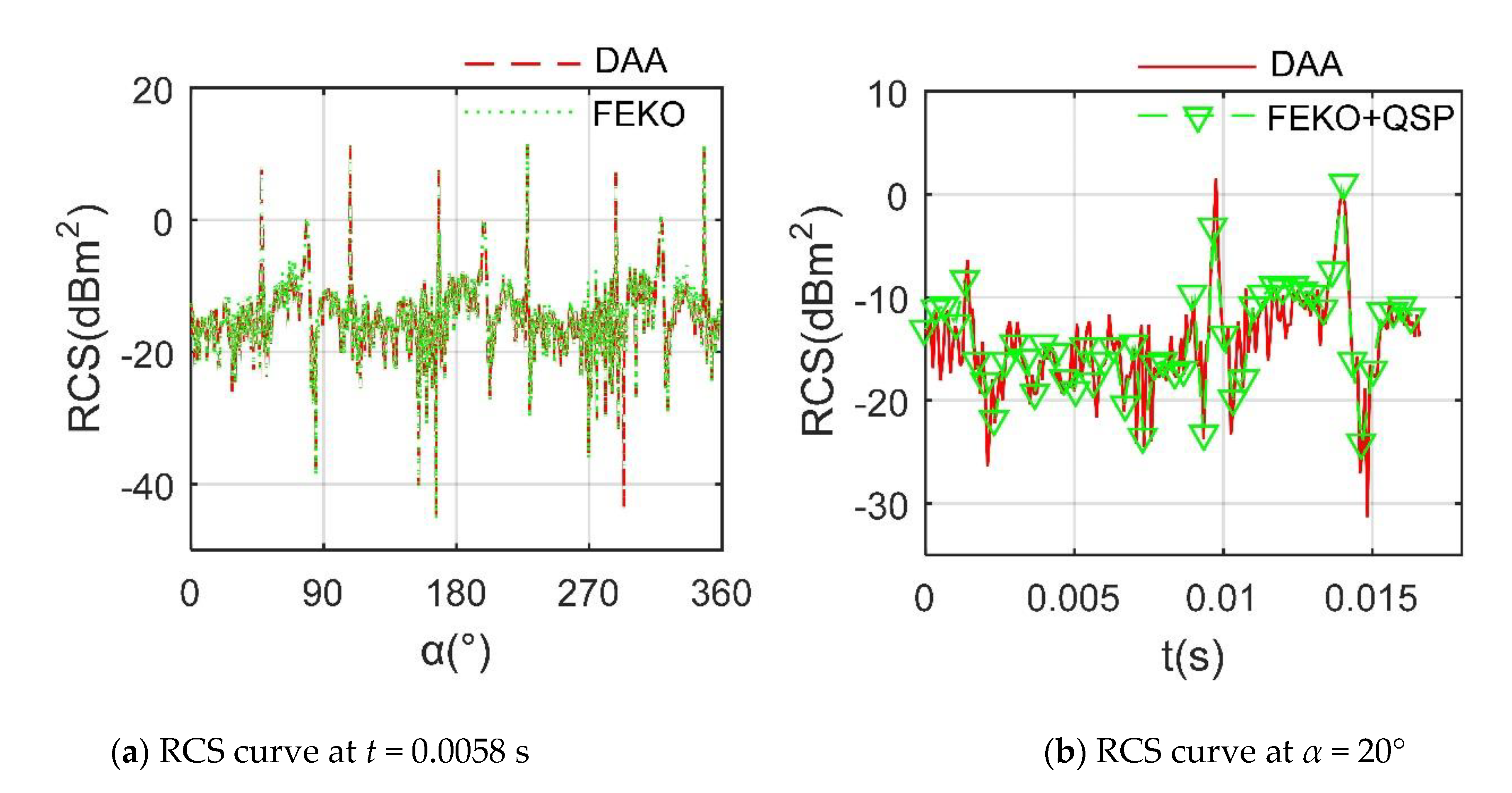

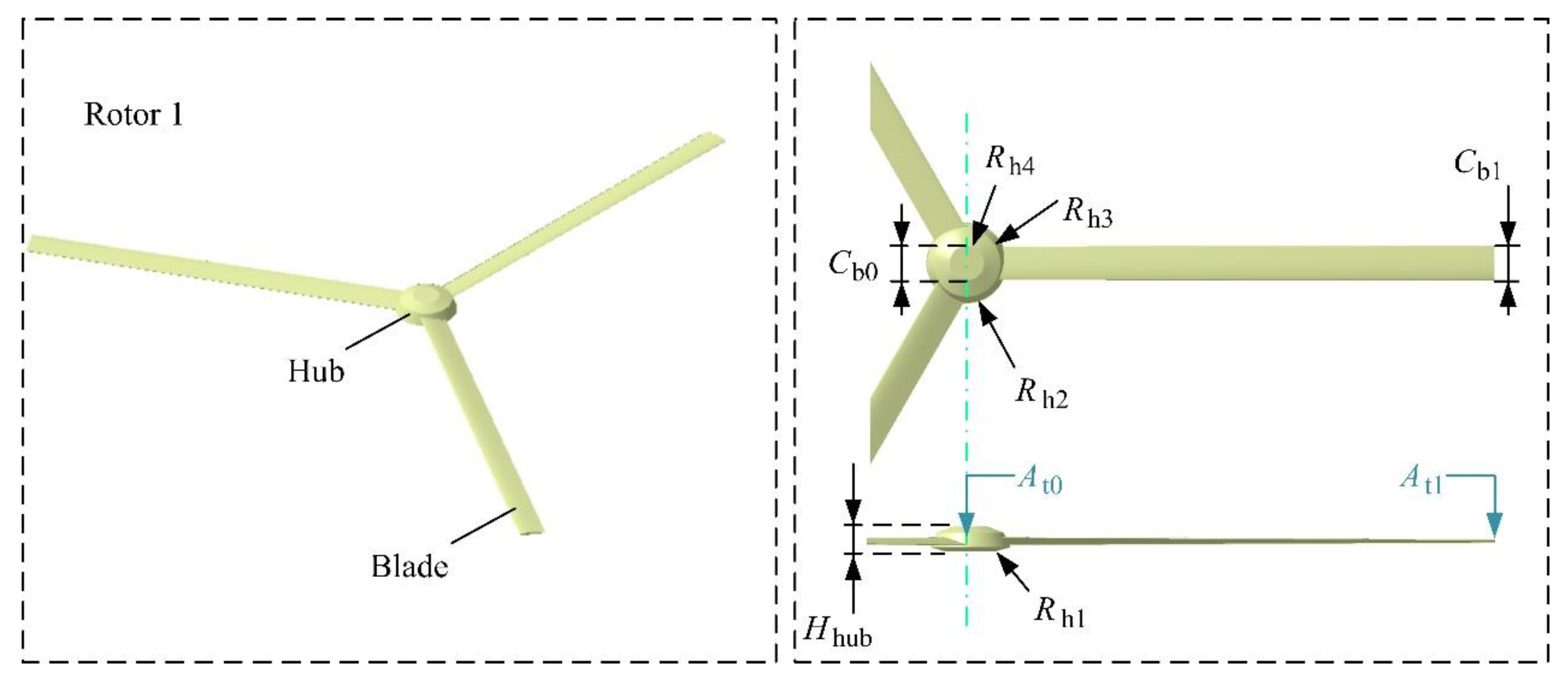
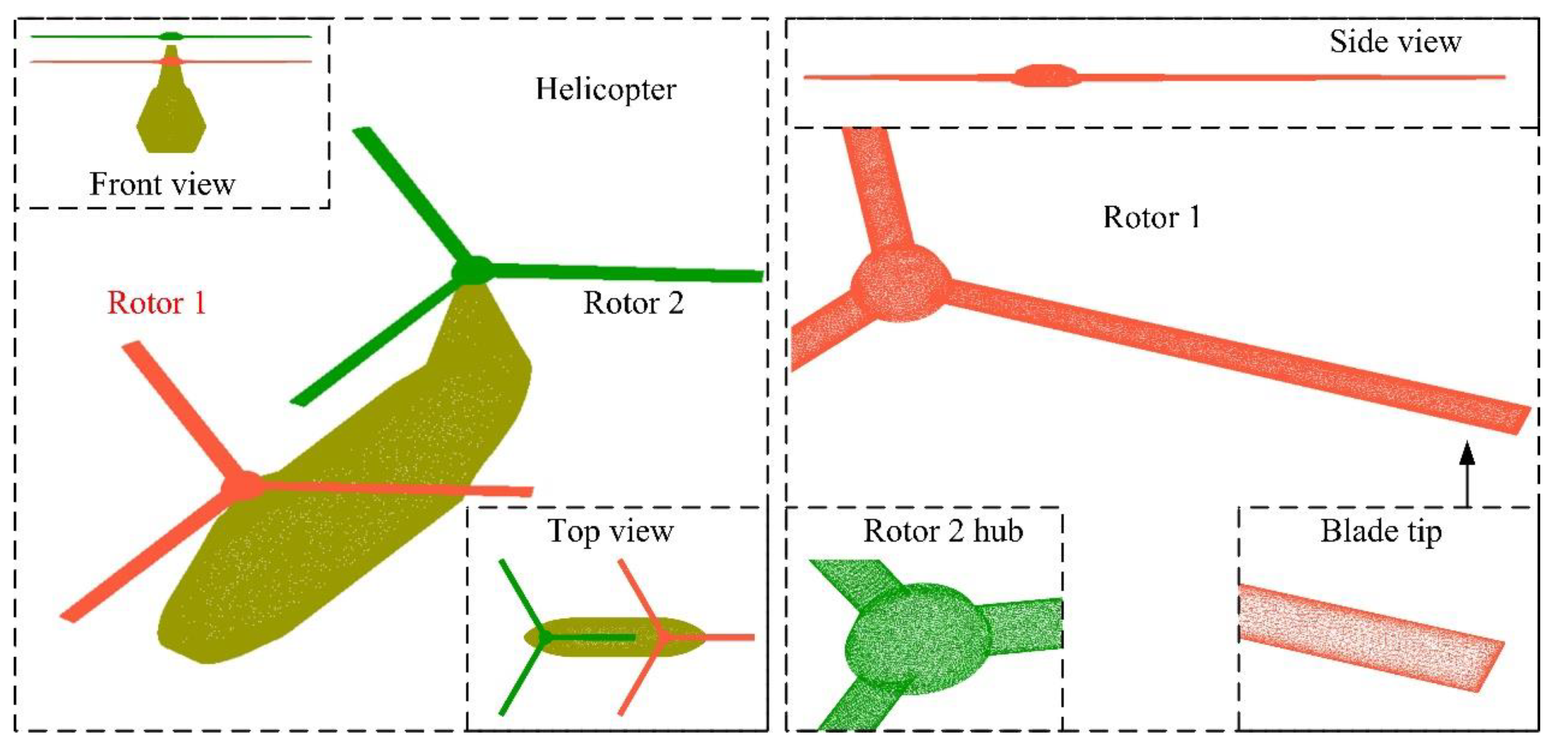
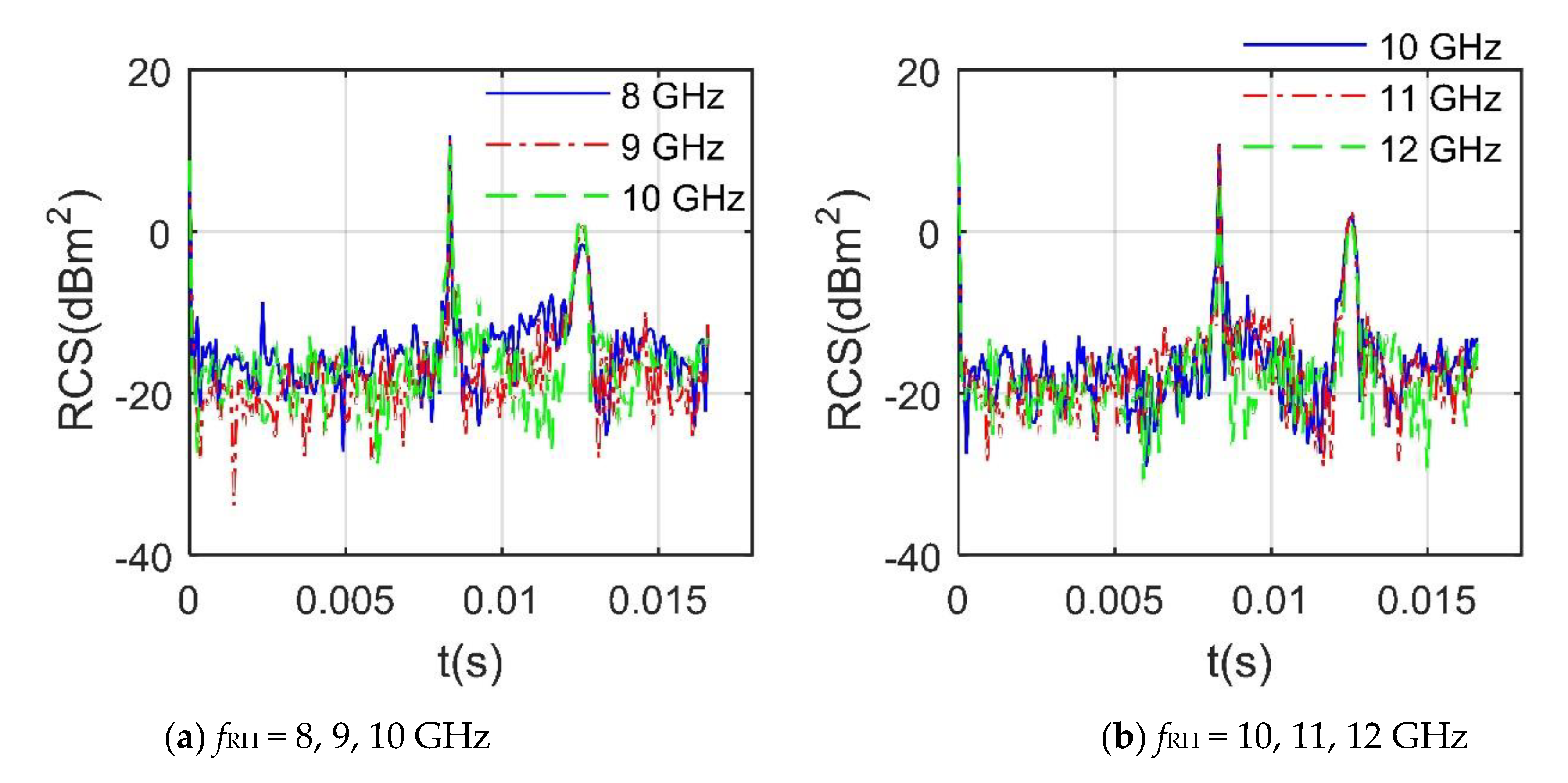

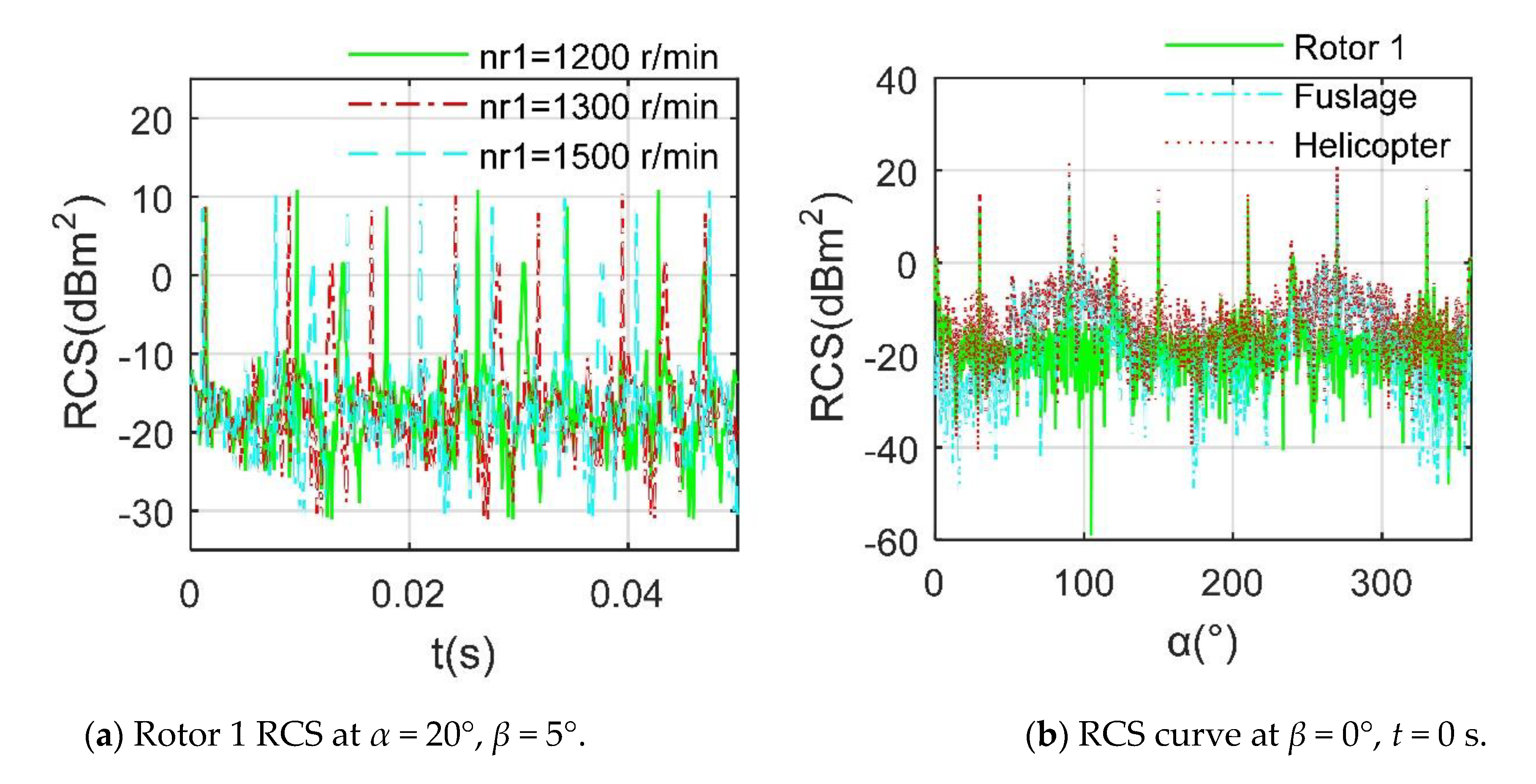


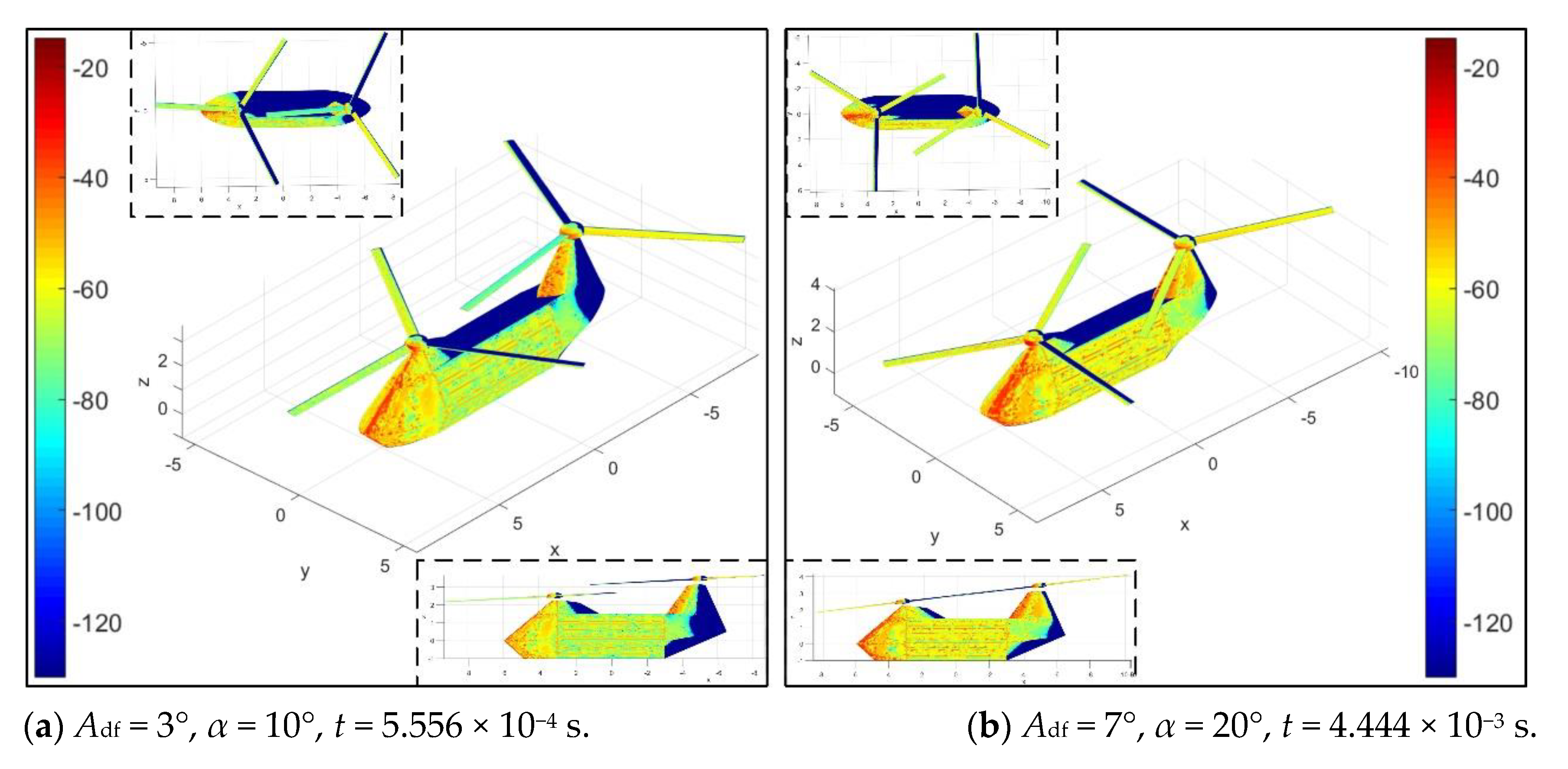
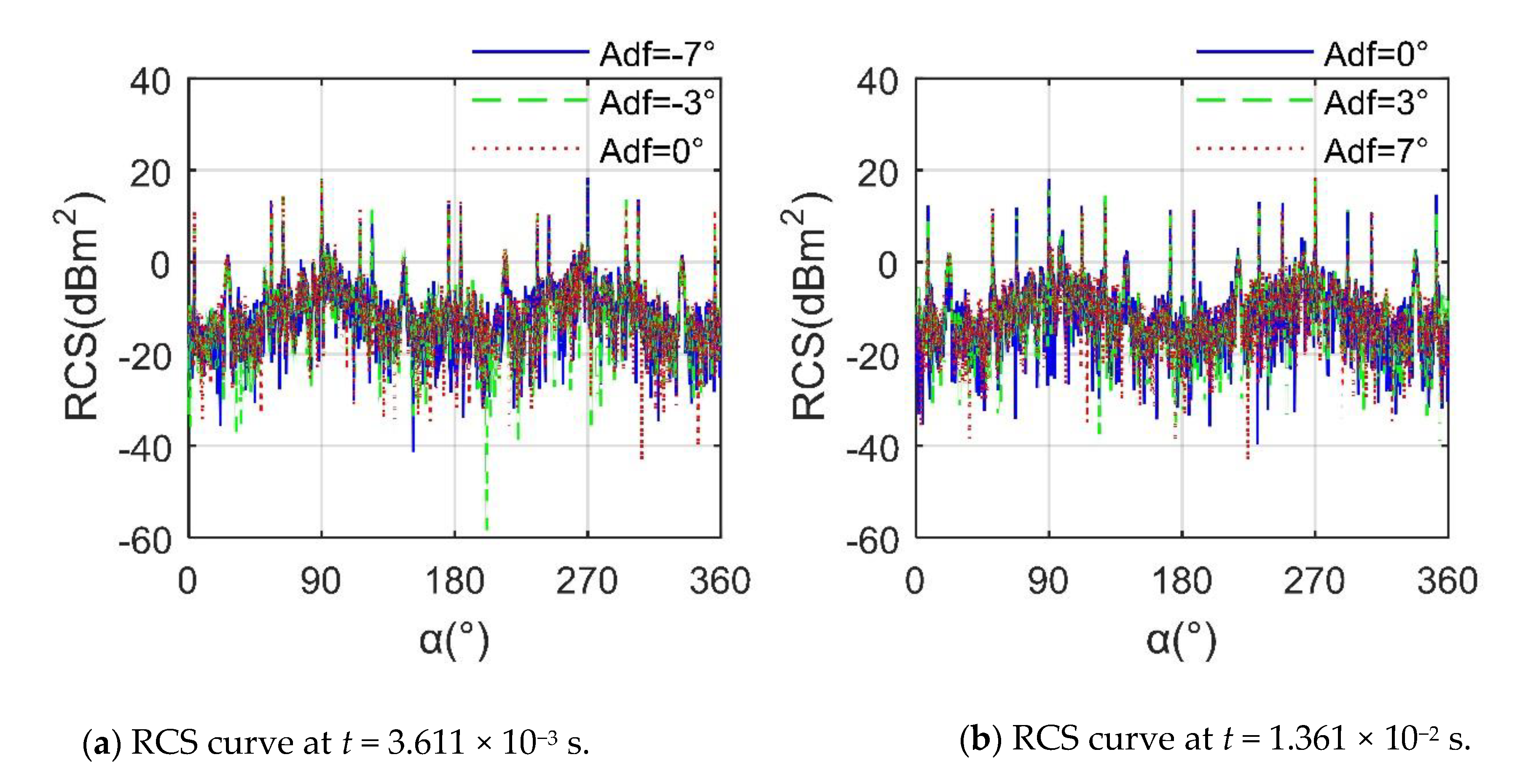
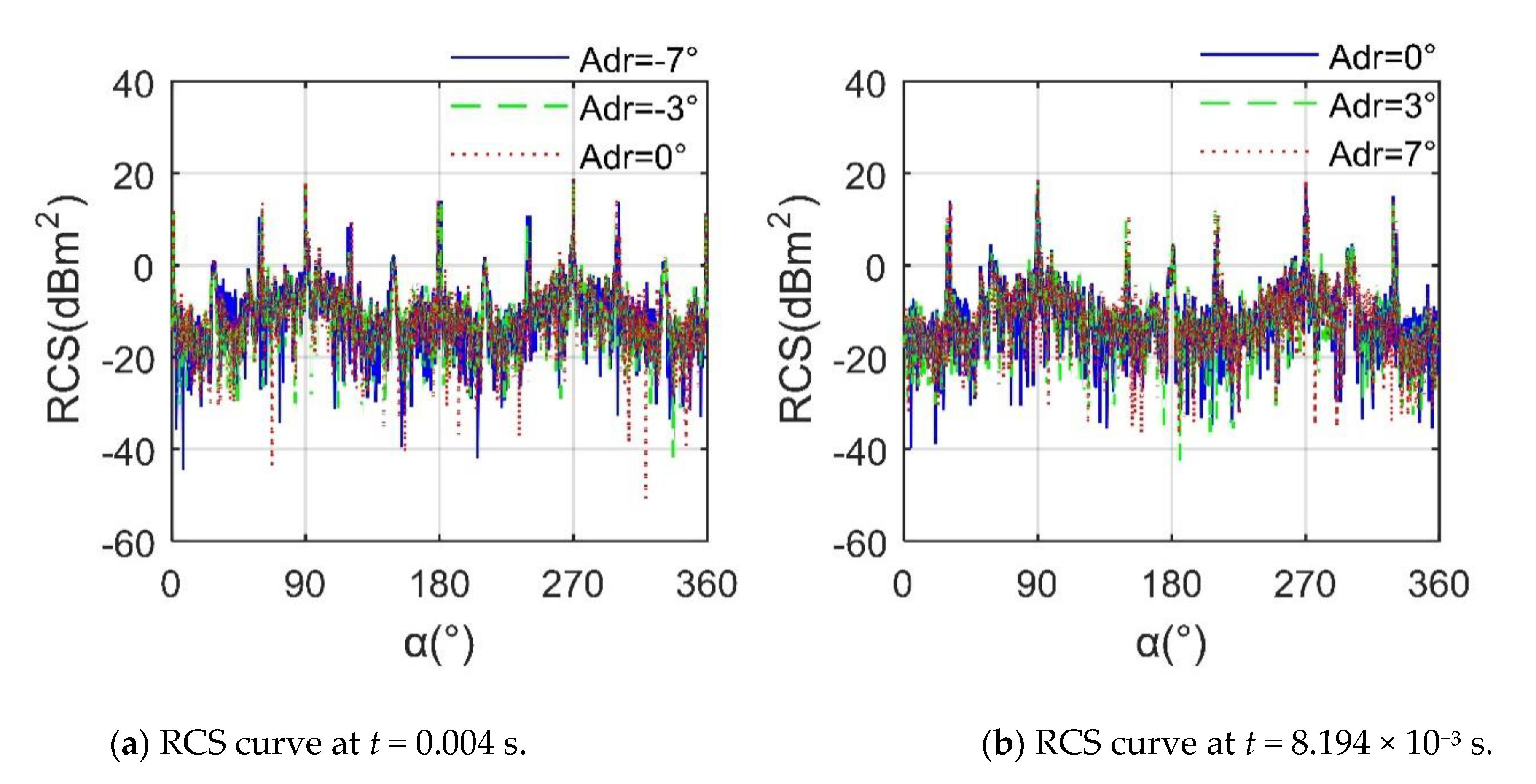
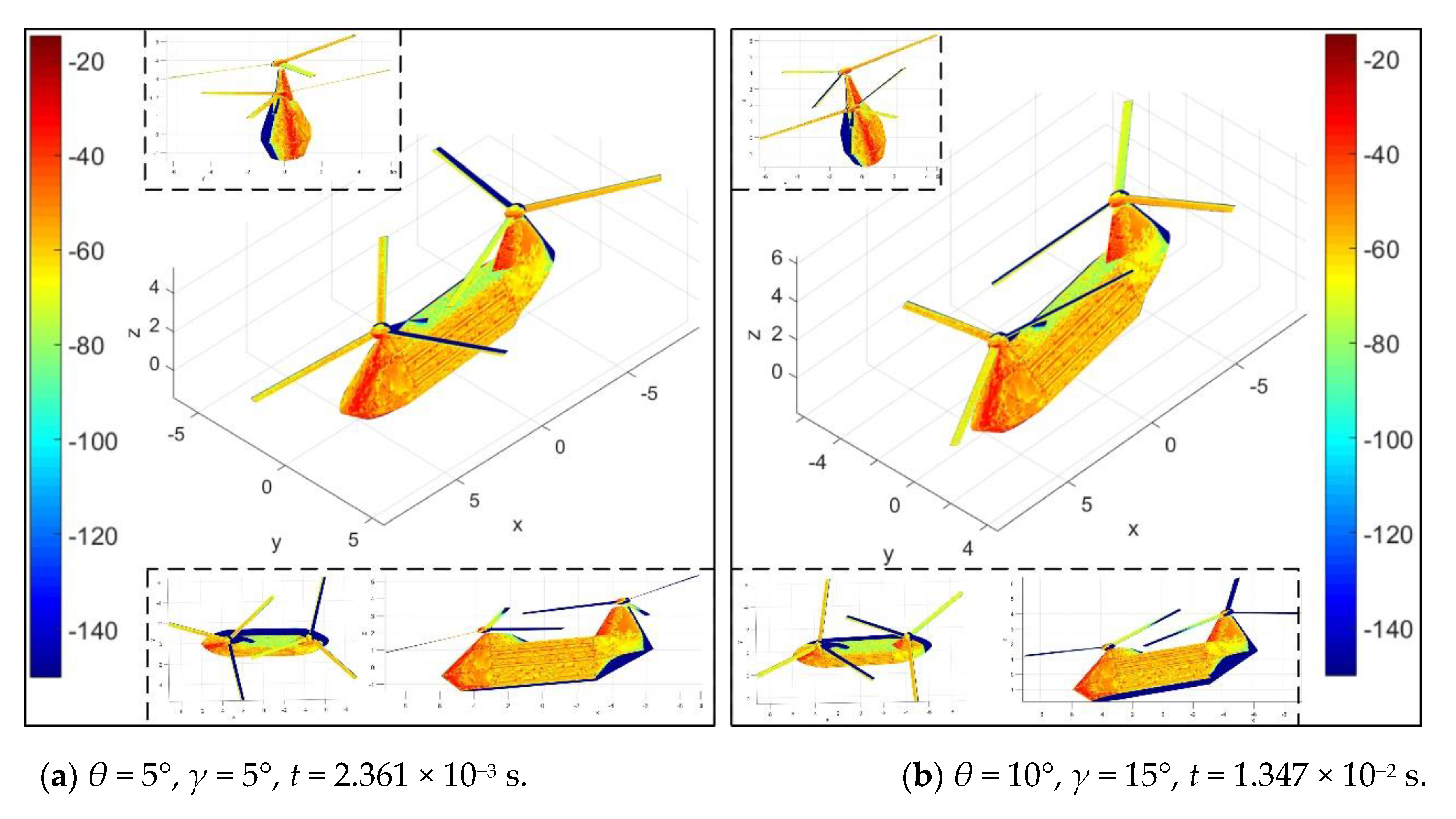


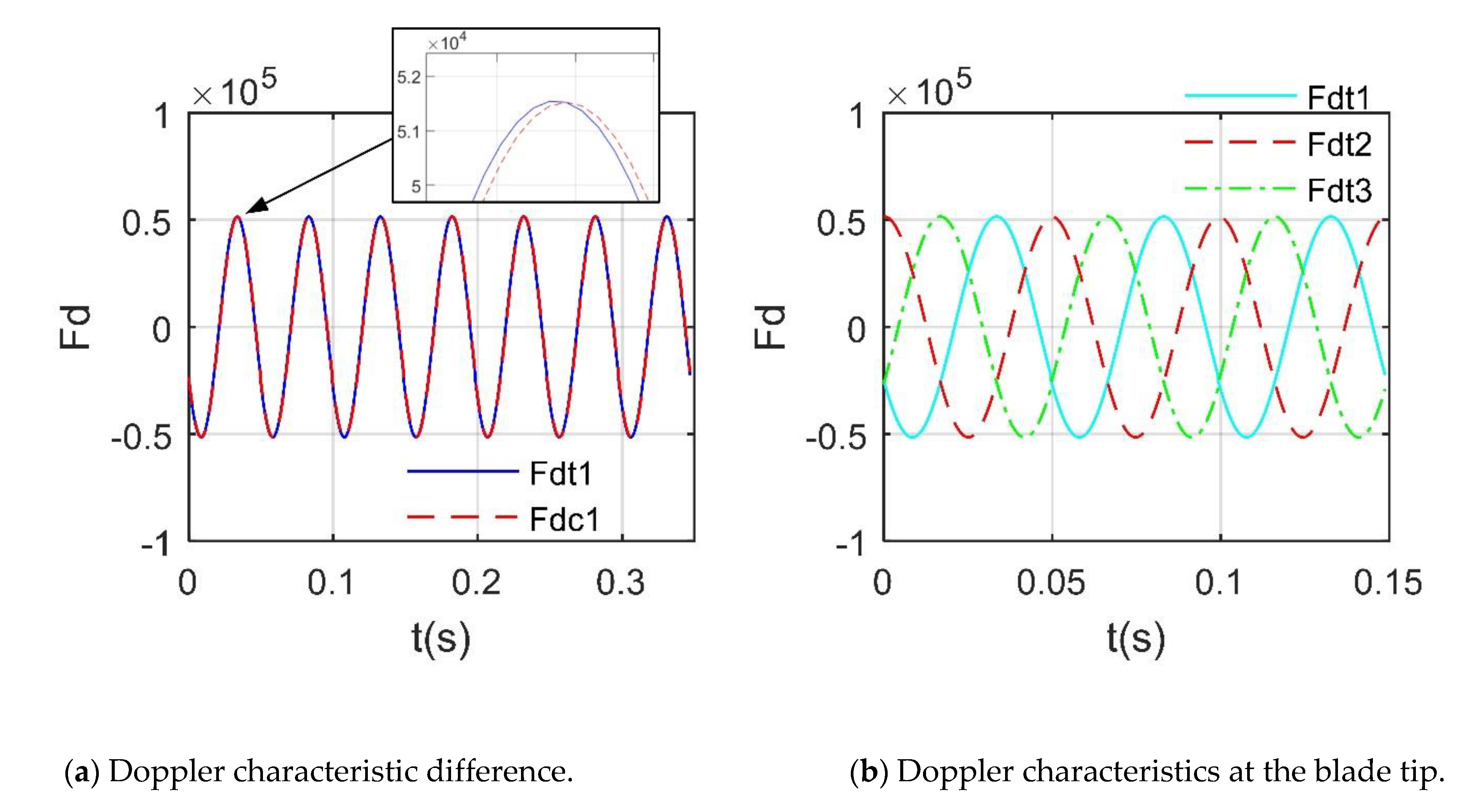
| Parameter | Lfus | Wfus | Hfus | Lfn | Rr1 |
|---|---|---|---|---|---|
| Value (m) | 12.5 | 2.7 | 4.163 | 6 | 6.15 |
| Parameter | Rr2 | Ht1 | Ht2 | Xr1 | Xr2 |
| Value (m) | 6.15 | 0.761 | 1.663 | 3.1 | 5.02 |
| Parameter | Airfoil | Cb0 (m) | At0 (°) | At1 (°) | Cb1 (m) |
|---|---|---|---|---|---|
| Value | TSAGI 8% | 0.4 | 12 | 3 | 0.4 |
| Parameter | Rh1 | Rh2 | Rh3 | Rh4 | Hhub |
| Value (m) | 0.293 | 0.47 | 0.39 | 0.2 | 0.29 |
| fR/GHz | 8 | 9 | 10 | 11 | 12 |
|---|---|---|---|---|---|
| Mean RCS (dBm2) | −7.8077 | −8.1684 | −7.9870 | −8.1797 | −8.7597 |
Publisher’s Note: MDPI stays neutral with regard to jurisdictional claims in published maps and institutional affiliations. |
© 2021 by the authors. Licensee MDPI, Basel, Switzerland. This article is an open access article distributed under the terms and conditions of the Creative Commons Attribution (CC BY) license (http://creativecommons.org/licenses/by/4.0/).
Share and Cite
Zhou, Z.; Huang, J. X-Band Radar Cross-Section of Tandem Helicopter Based on Dynamic Analysis Approach. Sensors 2021, 21, 271. https://doi.org/10.3390/s21010271
Zhou Z, Huang J. X-Band Radar Cross-Section of Tandem Helicopter Based on Dynamic Analysis Approach. Sensors. 2021; 21(1):271. https://doi.org/10.3390/s21010271
Chicago/Turabian StyleZhou, Zeyang, and Jun Huang. 2021. "X-Band Radar Cross-Section of Tandem Helicopter Based on Dynamic Analysis Approach" Sensors 21, no. 1: 271. https://doi.org/10.3390/s21010271
APA StyleZhou, Z., & Huang, J. (2021). X-Band Radar Cross-Section of Tandem Helicopter Based on Dynamic Analysis Approach. Sensors, 21(1), 271. https://doi.org/10.3390/s21010271






